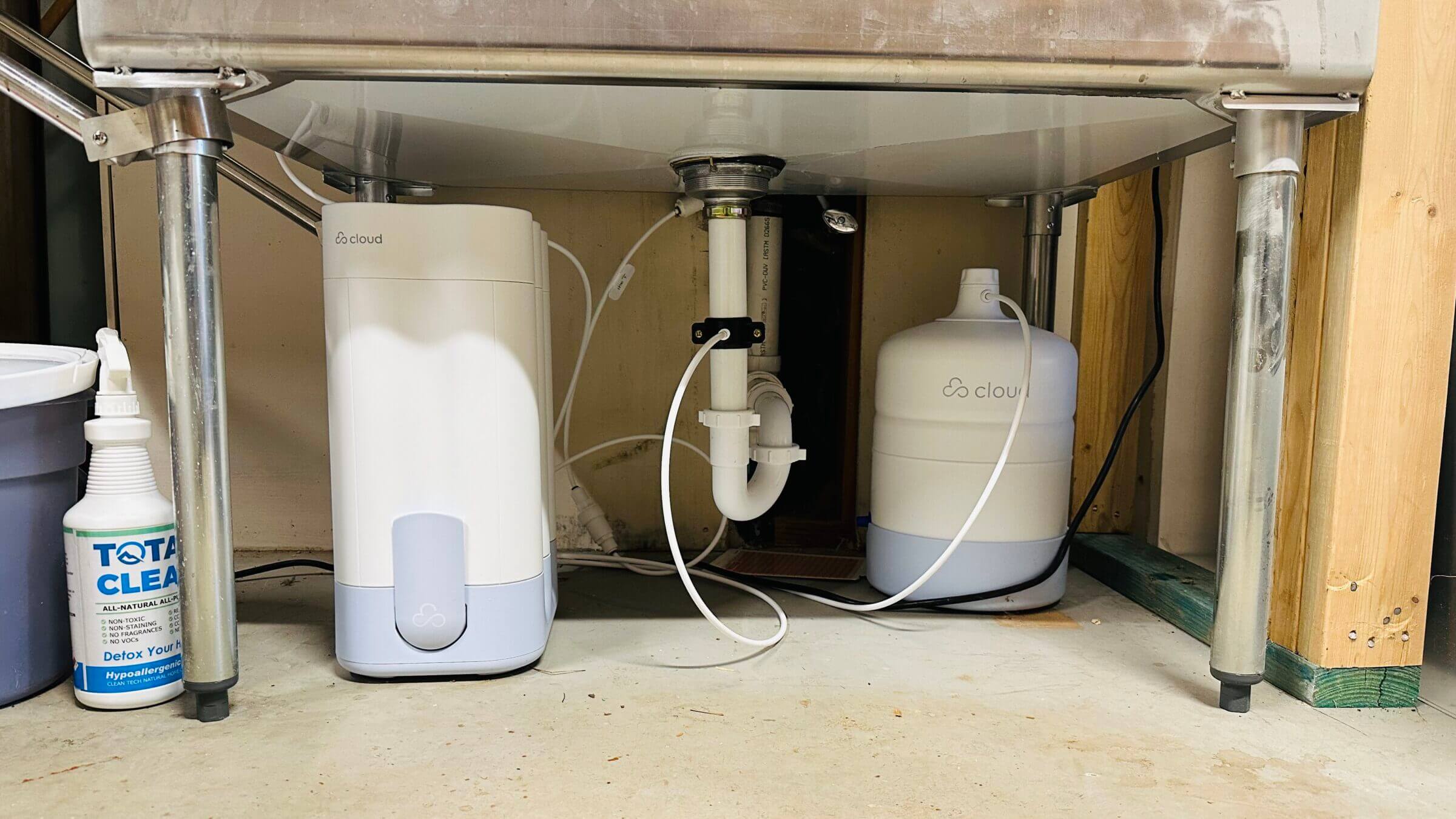I don’t consider tap water in the United States (and many other places around the world) to be fit for human consumption, because it’s often contaminated with toxic and endocrine-disrupting chemicals such as PFAs, fluoride, chlorine and others. That’s why we’ve invested in several water filtration systems for our home, which remove most of these contaminants from our water supply.
The latest addition to our water filtration setup is Cloud RO, a reverse osmosis system we installed under the sink in our basement in August 2023.
Here are my key takeaways after six months of using Cloud RO:
- Cloud RO is easy to install, thanks to its color-coded and individually-labeled components (including the filter cartridges).
- It’s a great value for the price, costing less than half of comparable systems (though without quite as much capacity and filtering power).
- Offers good filtering performance. The system removes 99% of the toxins found in tap water, including lead, fluoride, PFAs (aka “forever chemicals”), pesticides, and pharmaceuticals.
- Features excellent usability. Cloud RO offers a much faster flow rate and a lower waste ratio than many other reverse osmosis systems. As a result, you can fill up your glass with purified water faster, without increasing your water bill.
- Produces healthy reverse osmosis water. Unlike many other reverse osmosis systems, Cloud RO includes a remineralization cartridge that adds trace minerals like calcium, magnesium and potassium.
The bottom line is that Cloud RO is an excellent water purifier that effectively removes toxins while also remineralizing the water to make it biocompatible and to avoid electrolyte imbalances (one of the common issues associated with reverse osmosis water).
Our Water Filtration Setup
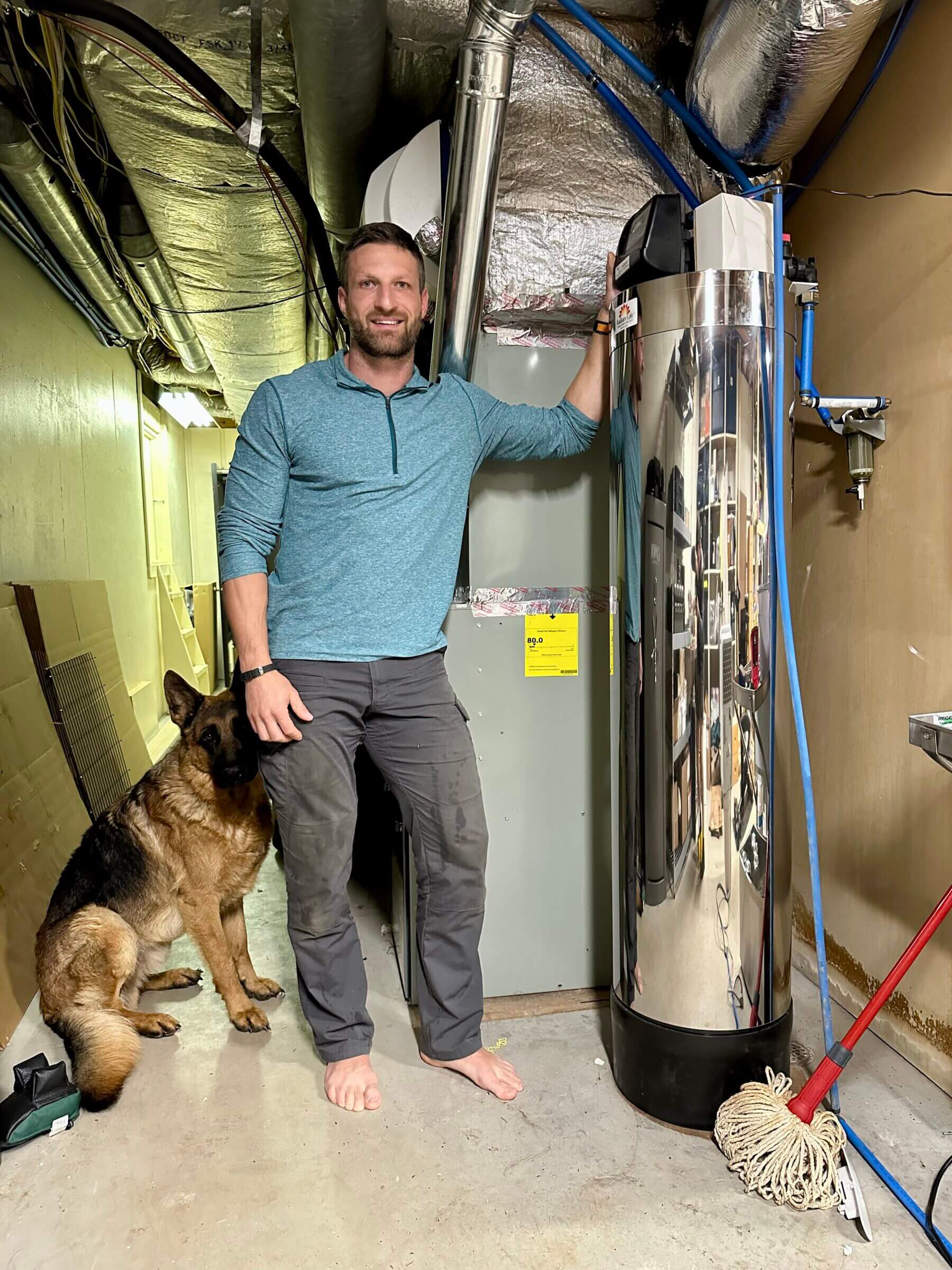
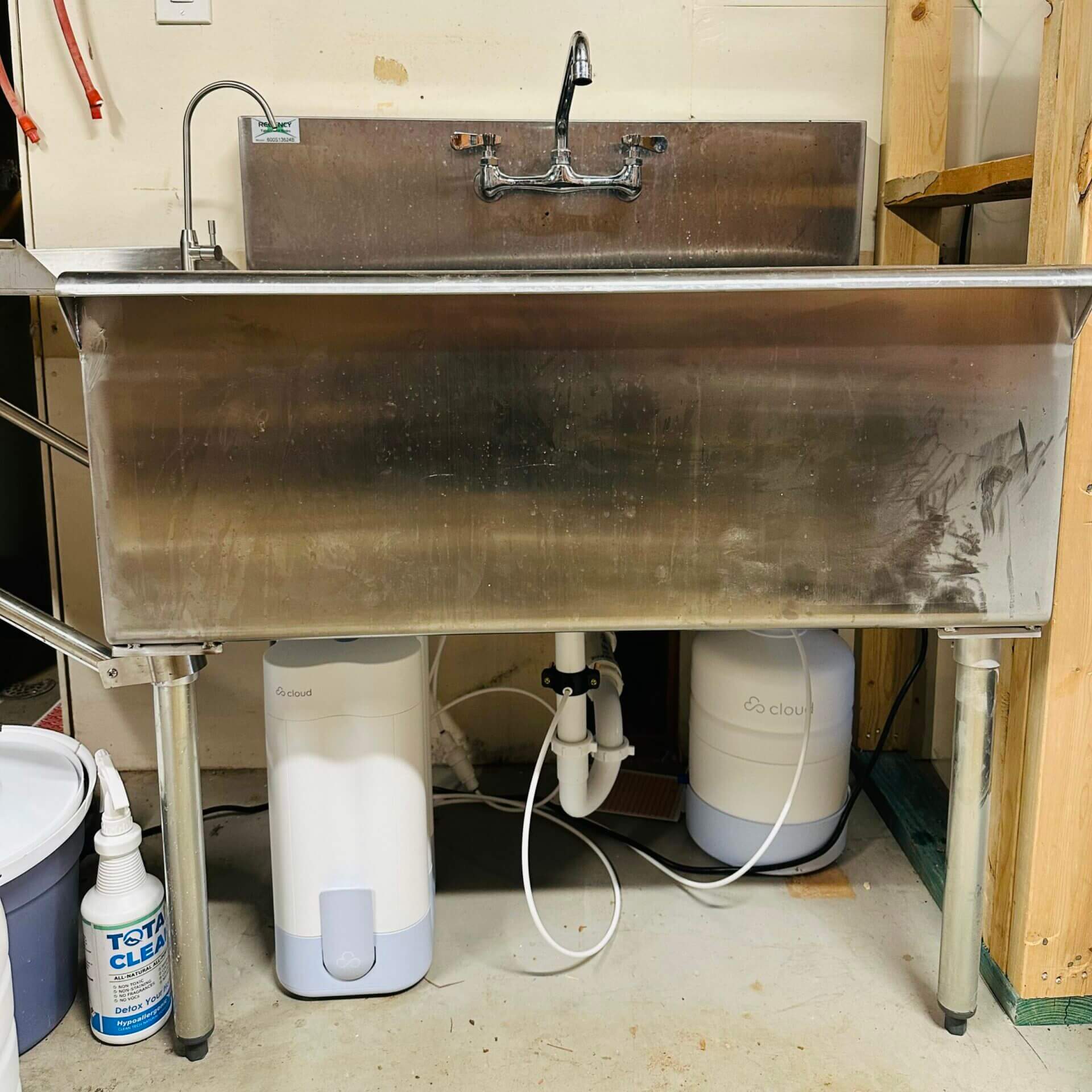
As I mentioned in the introduction, we use several water filtration systems in our home, including a whole-house water filtration system from Radiant Life, a 14-stage water purification system mounted under our kitchen sink (also from Radiant Life), and a Cloud RO system in our unfinished basement.
Without going into all the nitty-gritty I covered in my Radiant Life review, I should mention that regular tap water in the United States is not only harmful when ingested but can also cause issues when you expose your skin to it. While a whole-house water filtration system can remove many of the toxins in tap water, it’s less effective than a reverse-osmosis water filtration system.
Before I had heard about Cloud RO, we were already using a 14-stage biocompatible reverse osmosis water filtration system in our kitchen. But ever since we began raising livestock (as part of the Kummer Homestead project), we found ourselves using the faucet in our basement more frequently to drink water, especially during the warmer months of the year. (That’s because our unfinished basement is level with our backyard, where we keep most of our livestock.)
Given that, it only made sense to install an reverse osmosis system under the commercial stainless steel sink in our basement. While I was looking into getting a second RO system from Radiant Life, a representative from Cloud Water Filters reached out to me via email and asked if I was interested in giving their system a try. I agreed, and the company sent me their Cloud RO system, which I installed in the late summer of 2023.
Cloud RO Water Filter Review
Overall, I’m pleased with the performance of the Cloud RO system. Its relatively small footprint and sleek design means it should fit under most kitchen sinks, even if space is limited.
Pros
- It’s easy to install and easy to replace the filters.
- Offers good water filtration performance.
- Has a sleek and compact design.
- Can prevent black slime buildup on faucets.
Cons
- You can’t purchase filters individually (only as a set).
- It doesn’t include a UV filter (for enhanced microbial safety).
- Has a relatively small holding tank (2.8 gallons).
One of the unique features of Cloud RO is its companion app, which not only keeps tabs on your water consumption but also water quality. When the system detects a drop in water quality, it alerts you to replace the filter cartridges and can even trigger a filter replacement order (if you’ve opted into auto-shipments).
Installation
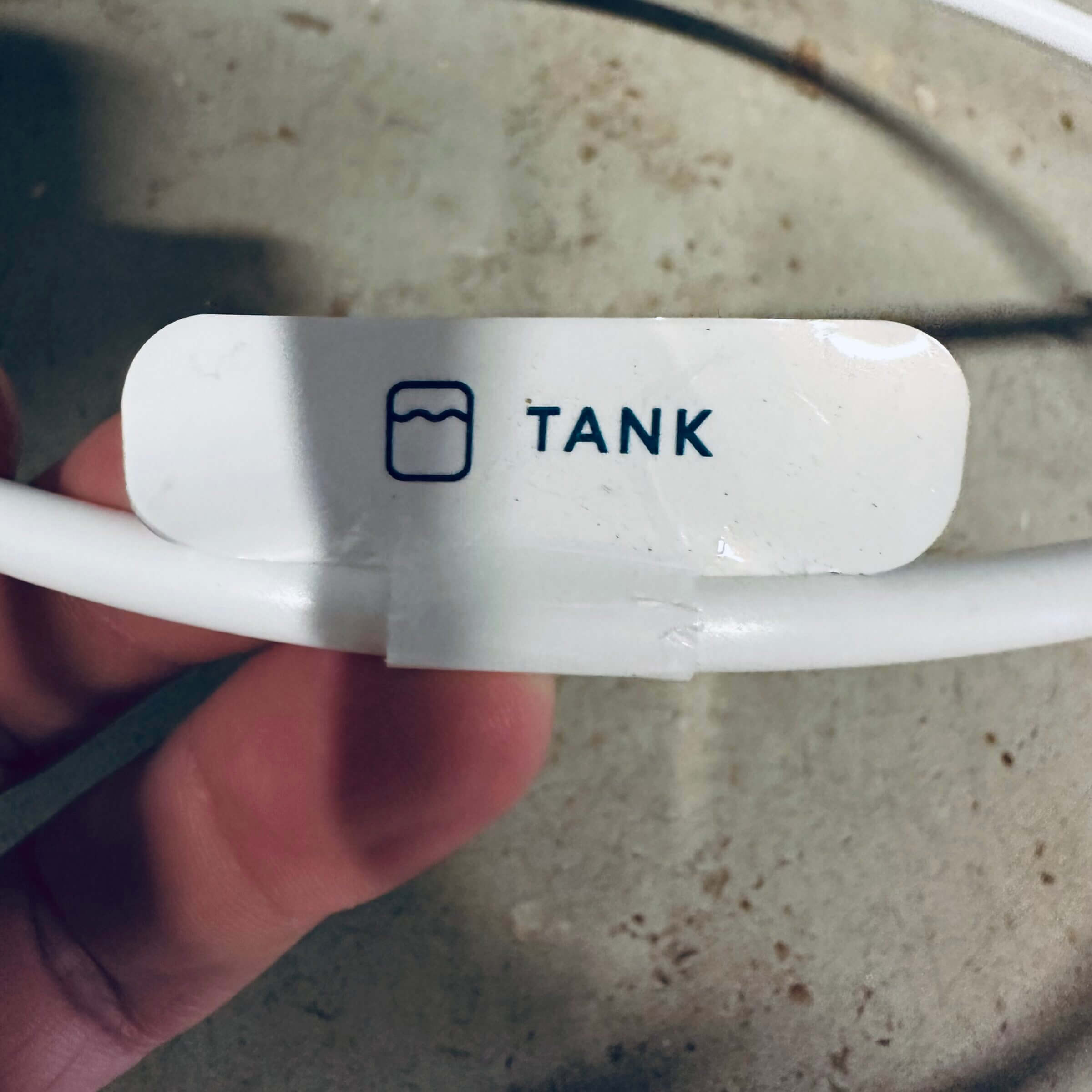
I’m not a plumber and have run into issues when installing reverse osmosis systems in the past (usually caused by poor documentation). Cloud RO is one of the easiest systems I’ve ever installed.
Every component is properly labeled, and combined with the step-by-step video instructions, that made installing Cloud RO a breeze. I spent less than 30 minutes setting up the system, including drilling a hole for the RO faucet into our stainless steel sink.
Note that most kitchen countertops already have a pre-drilled hole to accommodate a soap dispenser or a reverse osmosis faucet, so you shouldn’t have to worry about drilling a hole through granite, quartz or whatever material your countertop is made of. Our commercial sink had no extra hole, so I drilled it myself.
After drilling the hole, I inserted the filter cartridges and battery pack into the main unit (called the magazine). Then I connected it to the holding tank, the RO faucet and the main water supply using the silicone tubes and tools that came with the unit.
If you read the previous paragraph carefully, you might have noticed the mention of a battery pack. Cloud RO has a built-in water quality monitor and Bluetooth radio to communicate with the mobile app. But instead of requiring an electrical outlet to power the unit, the company decided to rely on a battery pack.
There are pros and cons to that approach. The advantage of the battery pack is that you won’t need an outlet under your kitchen sink (we have one, but not everyone does). The downside is that you have to replace (and pay for) a new battery pack with every filter replacement (we’ll discuss those implications in the pricing section).
Filtering Performance and Waste Water

Cloud RO leverages a combination of three filter types to purify water, including a sediment filter, a carbon block filter, and a reverse osmosis membrane. An additional remineralization cartridge adds trace minerals, including calcium and magnesium, back into the water to make it more alkaline. That improves the water’s taste and makes it more compatible with natural spring water.
According to the company, Cloud RO removes 99% of all inorganic toxins in regular tap water, including PFAs, pesticides and hormones, as well as contaminants added by water treatment facilities (such as fluoride and chlorine).
That’s good enough if your home is connected to a municipal water supply. However, if you’re on well water, you likely need an additional pretreatment system that removes or deactivates organic pathogens, such as viruses and bacteria (e.g., E. coli).
Aside from its excellent filtration performance, the other thing I like about Cloud RO is its 1:1 waste to water ratio. Every reverse osmosis system produces a certain amount of wastewater for every gallon of filtered water. Most RO systems, including the high-end Radiant Life system we own, have a waste to water ratio of 1:3. That means for every gallon of filtered water, the system produces three gallons of wastewater.
Depending on where you live, how much reverse osmosis water you consume daily, and how much you pay for water and sewer, that difference in wastewater production may be noticeable on your water bill. Since we’re not connected to the public sewer system and water is relatively cheap here, it doesn’t make a noticeable difference for us. But in general, I appreciate the lower water usage.
Tank Capacity and Flow Rate
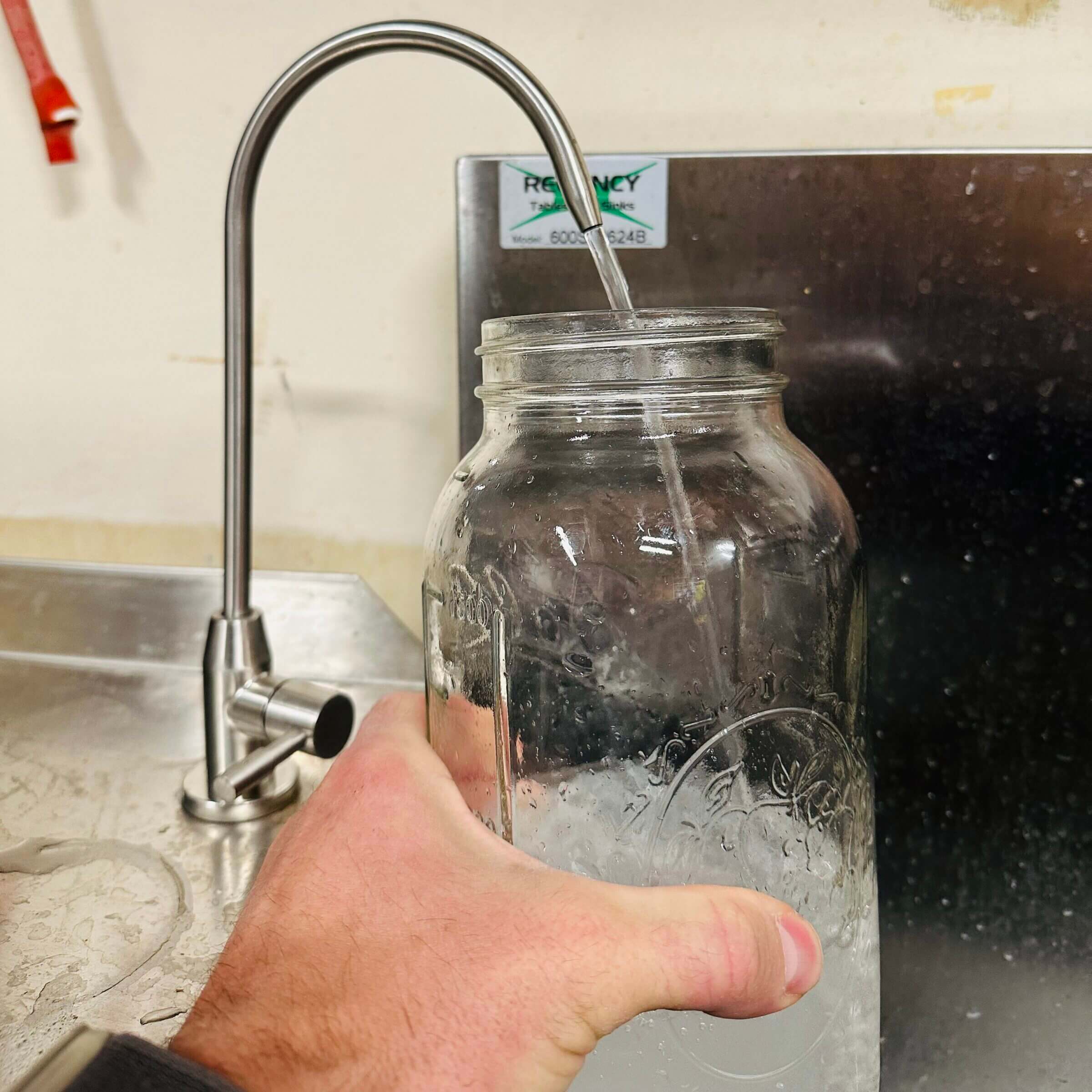
One common issue associated with reverse osmosis systems is their low flow rate.
In other words, filling a glass from an RO faucet takes much longer than from a regular faucet. That’s because the water in the holding tank isn’t under a lot of pressure, which results in a reduced flow rate.
Some people find that annoying, especially when they have to fill up a large container, such as the water tank of a coffee maker or a stock pot.
I was surprised to learn that Cloud RO offers a significantly higher flow rate than our other RO system, thanks to a battery-powered pump that’s built into the system. The integrated pump not only makes refilling the holding tank quicker, but also leads to a higher water pressure from the faucet.
Speaking of the holding tank, I wish Cloud RO offered multiple size options (as does Radiant Life) to accommodate larger households. Unfortunately, the company only offers a 2.8 gallon tank. Once the tank is empty, it takes about one hour to refill completely.
While 2.8 gallons may be sufficient for smaller families, it’s probably not enough if you want to use reverse osmosis water for drinking, cooking and washing food.
In our case, the tank capacity isn’t a limiting factor because we use Cloud RO only on occasion when we need access to fresh drinking water while we’re working outside.
System Maintenance
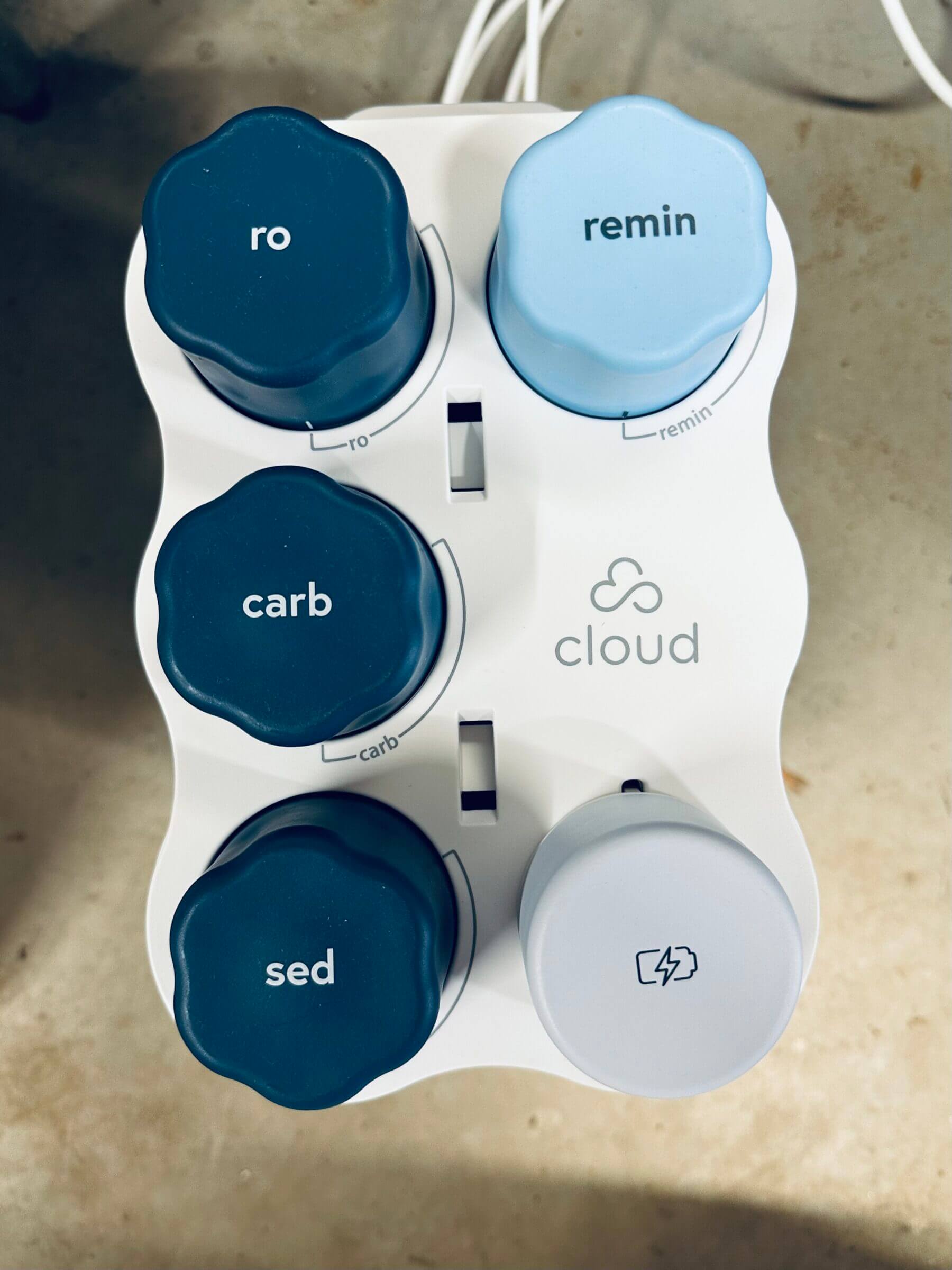
The maintenance for a Cloud RO system includes replacing the filter cartridges approximately once per year and replacing the holding tank once every three years.
The exact filter replacement cadence depends on several factors, including the quality of your source water and your water consumption.
We haven’t had to replace our filters yet, but for reference, we’ve been using our Radiant Life RO system since February 2021 and have only had to replace the sediment filter once. (We have not had to replace any of the other filters.)
We get away with such few filter replacements because we also own a whole house water filtration system, which removes most contaminants before they even reach the reverse osmosis system. As a result, we expect to replace the filters in our Cloud RO system only every three to four years.
If you’re new to reverse osmosis systems, one thing that might surprise you is the requirement to replace the holding tank. I didn’t know about that either, but RO tanks are pressurized, and that pressure declines over the years, thus reducing water flow. Additionally, there is a risk of bacterial contamination in systems not equipped with UV lights to kill pathogens.
Price and Recurring Cost

We’ve purchased several reverse osmosis systems over the past decade at various price ranges, including systems from APEC, Radiant Life and others.
Cloud RO retails for $750 but is often on sale for a much lower price.
In other words, Cloud RO isn’t the cheapest under-the-sink RO system on the market, but it’s not the most expensive one either.
For example, our Radiant Life 14-In-1 system retails for around $1,700. (You can see more about the differences in the next section, below.)
I consider the Cloud RO to be a solid value given the system’s filtration performance, ease of installation and use and the automatic water testing and filter replacement notifications.
In addition to the one-time investment, you should include $200 in your annual budget for filter and battery replacements.
Cloud RO vs. Radiant Life 14-Stage System
| Cloud RO | Radiant Life | |
|---|---|---|
| Filter stages | 4 | 14 |
| Waste to water ratio | 1:1 | 1:3 |
| Time to fill a 16 ounce glass | 15 seconds | 21 seconds* |
| Toxin removal | 99% | 99.99% |
| Removes inorganic toxins | Yes | Yes |
| Removes organic toxins | No | Yes |
| UV lamp | No | Yes |
| Remineralization | Yes | Yes |
| Water restructuring | No | Yes |
| Tank size | 2.8 gallons | 4, 9 or 14 gallons |
| Cost | $750 | $1,695 |
As you can see in the table above, Cloud RO costs less than half the price of the high-end system from Radiant Life. But Cloud RO only features four cartridges (if you count the remineralization cartridge).
In contrast, the Radiant Life system has 14, including a UV lamp to kill organic pathogens such as bacteria, viruses and protozoa, and a water restructuring cartridge to rearrange the water molecules to mimic water in nature.
As a result, the Radiant Life system is more capable of removing toxins, including those in well water. The Radiant Life system also comes with a larger (4 gallon) holding tank, while also offering even larger sizes for an additional cost.
If you’re on municipal water (as opposed to well water) and are looking for a high-quality under-the-sink RO system that’s easy to install and maintain and doesn’t break the bank, Cloud RO is an excellent choice. But if you’re on well water and want the absolute best RO system money can buy, or if you need a larger holding tank, you can’t beat the Radiant Life system.
We’ve been satisfied with the performance of both systems based on how we use them in our household.
Cloud RO FAQs
Without remineralization, RO water is akin to distilled water. In other words, it’s devoid of healthy minerals and other compounds found in natural spring water. The problem with consuming pure RO water is that it attracts minerals from your body and/or your food. That can lead to electrolyte deficiencies or imbalances.
That’s why I don’t recommend consuming distilled or RO water, unless it has been remineralized. Most RO systems on the market don’t include remineralization capabilities, making them less than ideal as a source of drinking water.
If you know how to use a drill or a wrench, you should be able to install Cloud RO without the help of a plumber. However, if you don’t feel comfortable doing it yourself, any plumber or handyman should be able to easily do it for you.
Cloud RO uses Bluetooth to connect to your phone and send alerts. The system collects and stores data until a device running the app is in range. That means you have to be near your Cloud RO system every so often with the mobile app open to receive alerts. I make it a point to open the app every few months when I’m near the system to see the current water quality and filter status information.
If you never open the app within range of the system, you’ll never receive alerts.
Cloud RO Water Purifier Review: Final Verdict
We’ve been using Cloud RO for several months and I can’t say anything negative about it. I love the comparatively high flow rate and water pressure coming out of the holding tank, as well as the intuitive mobile app that alerts me when I have to replace the filters (and which keeps me informed about the quality of my drinking water).
If we used Cloud RO as the primary reverse osmosis system in our kitchen, I’d love to have a larger tank and the ability to replace individual filter cartridges. But since Cloud RO isn’t our primary filtering system, neither of those points has been an issue.
If you’re in the market for a high-quality RO system and have further questions, please comment below!

Michael Kummer is a healthy living enthusiast and CrossFit athlete whose goal is to help people achieve optimal health by bridging the gap between ancestral living and the demands of modern society.
Medical Disclaimer
The information shared on this blog is for educational purposes only, is not a substitute for the advice of medical doctors or registered dieticians (which we are not) and should not be used to prevent, diagnose, or treat any condition. Consult with a physician before starting a fitness regimen, adding supplements to your diet, or making other changes that may affect your medications, treatment plan or overall health. MichaelKummer.com and its owner MK Media Group, LLC are not liable for how you use and implement the information shared here, which is based on the opinions of the authors formed after engaging in personal use and research. We recommend products, services, or programs and are sometimes compensated for doing so as affiliates. Please read our Terms and Conditions for further information, including our privacy policy.
